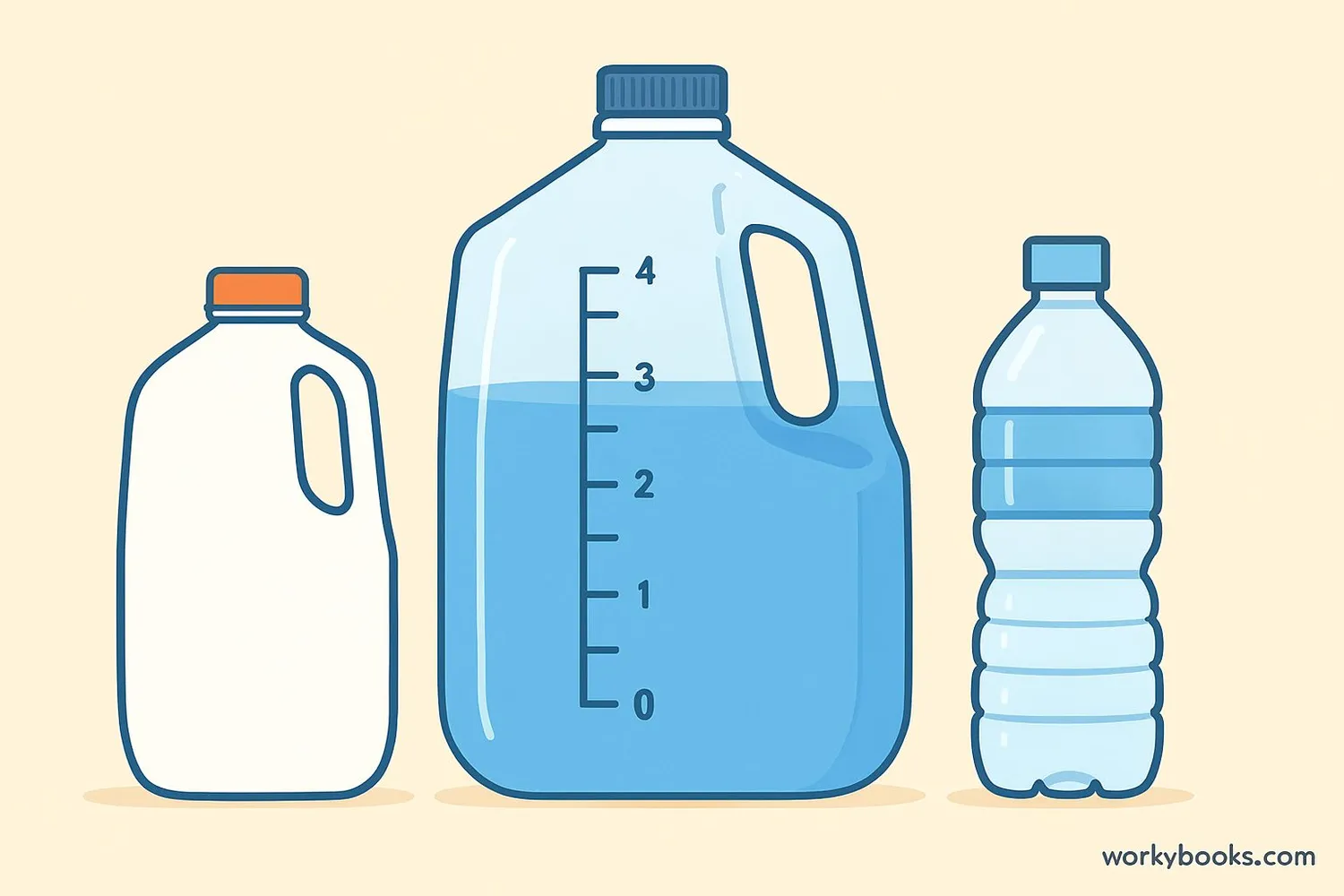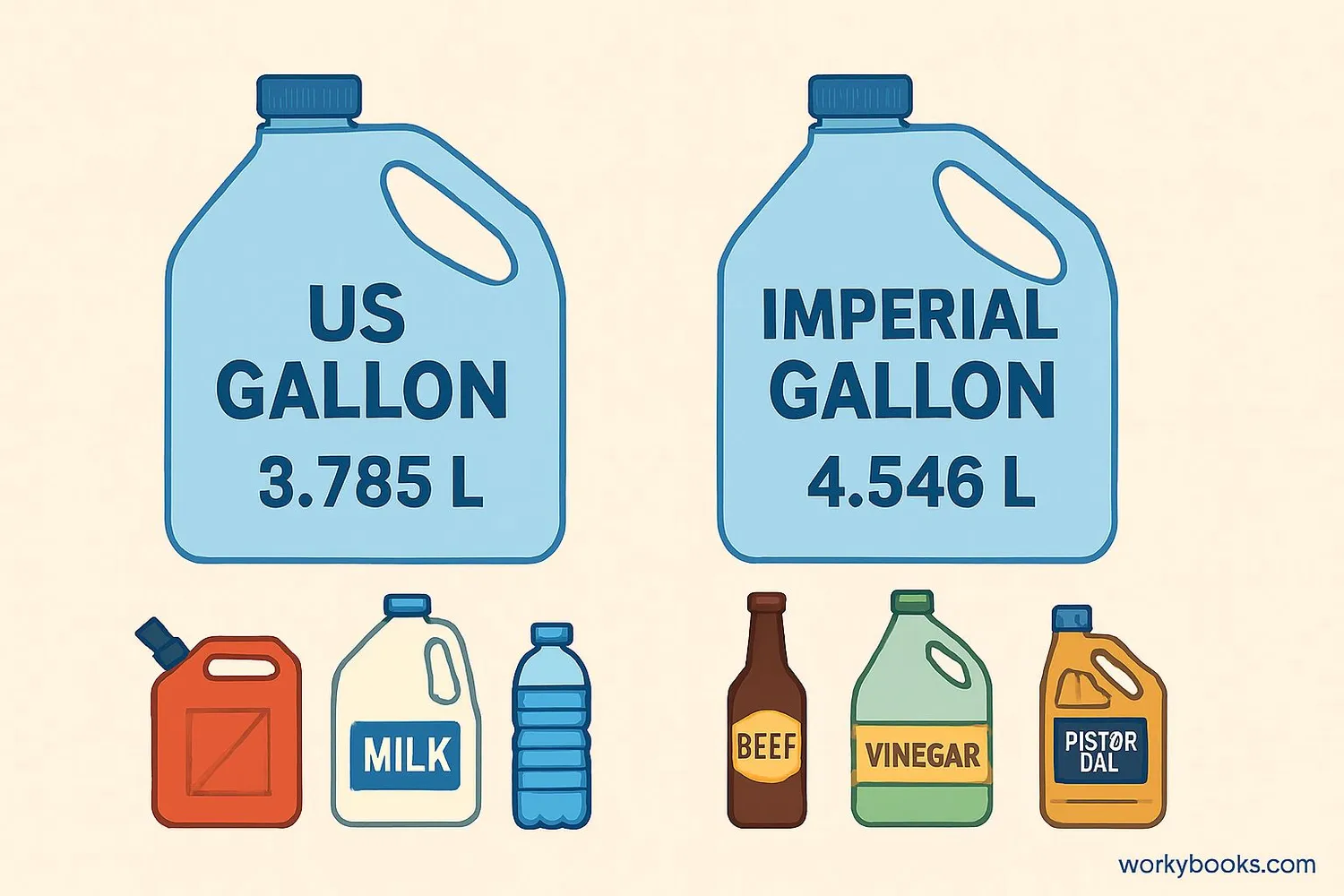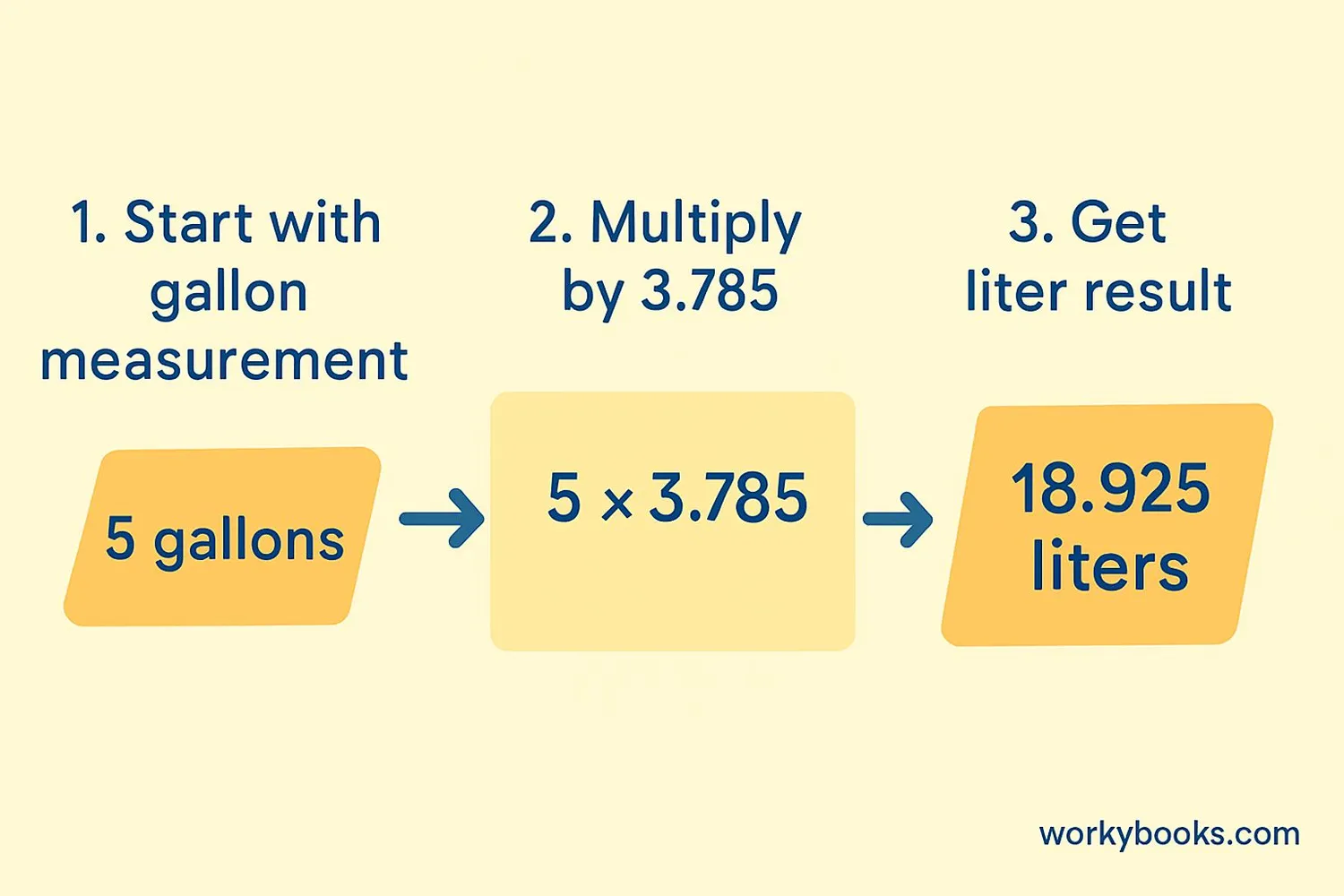Gallon - Definition, Examples, Quiz, FAQ, Trivia
Learn about liquid measurement with easy explanations, conversion charts, examples, and practice activities
What is a Gallon?

A gallon is a unit of measurement for liquids. It helps us understand how much liquid a container can hold. The abbreviation for gallon is "gal".
In the United States, we use gallons to measure many liquids like milk, water, gasoline, and juice. One gallon equals:
• 4 quarts
• 8 pints
• 16 cups
• 128 fluid ounces
Understanding gallons helps us when we're cooking, filling up a car with gas, or buying drinks at the store.
Key Concept
1 gallon = 4 quarts = 8 pints = 16 cups = 128 fluid ounces. This relationship helps with measurement conversions.
Types of Gallons

There are two main types of gallons used around the world:
US Liquid Gallon: This is the gallon used in the United States. It equals exactly 3.785 liters. When you buy milk or gasoline in the US, it's measured in US gallons.
Imperial Gallon: This gallon is used in the United Kingdom and some Commonwealth countries. It is larger than the US gallon and equals 4.546 liters. That's about 1.2 US gallons.
It's important to know which gallon is being referred to, especially when traveling or comparing measurements from different countries.
Conversion Facts
Remember that these are different measurements with the same name!
Gallon Conversion

Converting between gallons and liters is important when working with international recipes or measurements. Here's how to do it:
To convert gallons to liters: Multiply the number of gallons by 3.785
To convert liters to gallons: Divide the number of liters by 3.785
Let's practice with an example:
Example: Convert 2 gallons to liters
Step 1: Start with the measurement in gallons → 2 gallons
Step 2: Multiply by 3.785 → 2 × 3.785
Step 3: Calculate the result → 7.57 liters
So 2 gallons equals 7.57 liters.
Gallon to Liter Conversion Chart
| Gallons (US) | Liters |
|---|---|
| 1 gal | 3.785 L |
| 2 gal | 7.57 L |
| 3 gal | 11.36 L |
| 4 gal | 15.14 L |
| 5 gal | 18.93 L |
| 10 gal | 37.85 L |
Remember
When converting between measurement systems, always check if you're working with US gallons or Imperial gallons, as they have different conversion factors.
Real-World Examples

Let's look at some real-world examples of gallon measurements:
Example 1: A standard milk jug in the US holds 1 gallon of milk.
Example 2: A small car's gas tank might hold 12 gallons of gasoline. How many liters is that?
Solution: 12 × 3.785 = 45.42 liters
Example 3: A large water cooler bottle holds 5 gallons of water. How many cups is that?
Solution: 5 × 16 = 80 cups
Example 4: A recipe calls for 2 liters of water. How many gallons is this?
Solution: 2 ÷ 3.785 ≈ 0.53 gallons (about half a gallon)
Practice looking for gallon measurements on containers in your home - milk, juice, cleaning supplies, and gasoline!
Conversion Tip
To estimate gallons to liters: Multiply by 4 and then subtract a little. The actual conversion factor is 3.785, which is close to 4.
Gallon Measurement Quiz
Test your knowledge about gallons with this 5-question quiz. Choose the correct answer for each question.
Frequently Asked Questions
Here are answers to common questions about gallons:
Measurement Trivia
Discover interesting facts about measurement systems:
Origin of the Gallon
The gallon was originally defined as the volume of 8 pounds of wheat. The word "gallon" comes from the Old Northern French word "galon" meaning "liquid measure."
Water Weight
One US gallon of water weighs approximately 8.34 pounds at room temperature. This makes water a handy reference for understanding weight and volume relationships.
Largest Gallon Container
The world's largest gallon jug was created in 2017 and stood over 4 meters tall. It could hold the equivalent of 512 regular gallons!
Wine Gallons
In medieval England, there were multiple definitions of gallons for different goods: wine gallon, ale gallon, and corn gallon. The wine gallon eventually became the standard US gallon.





